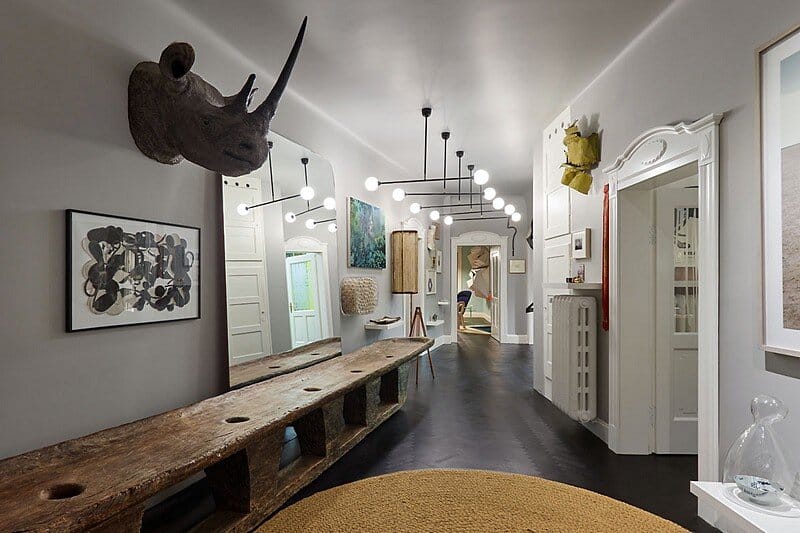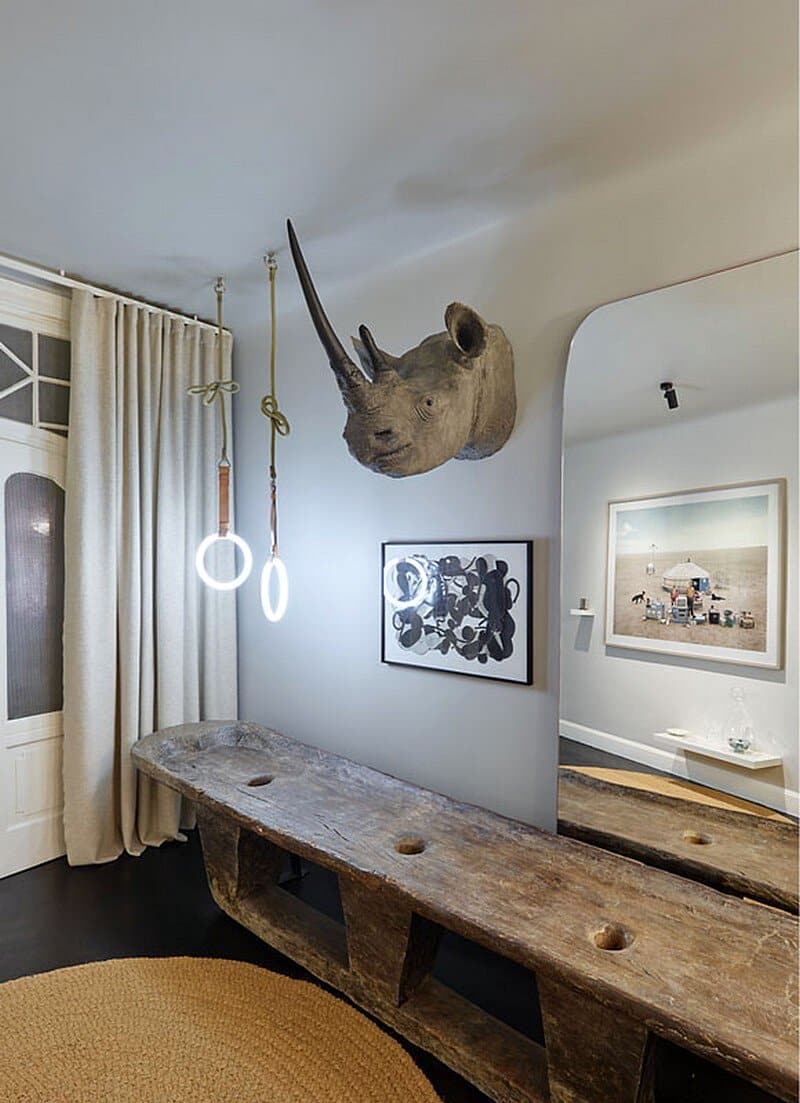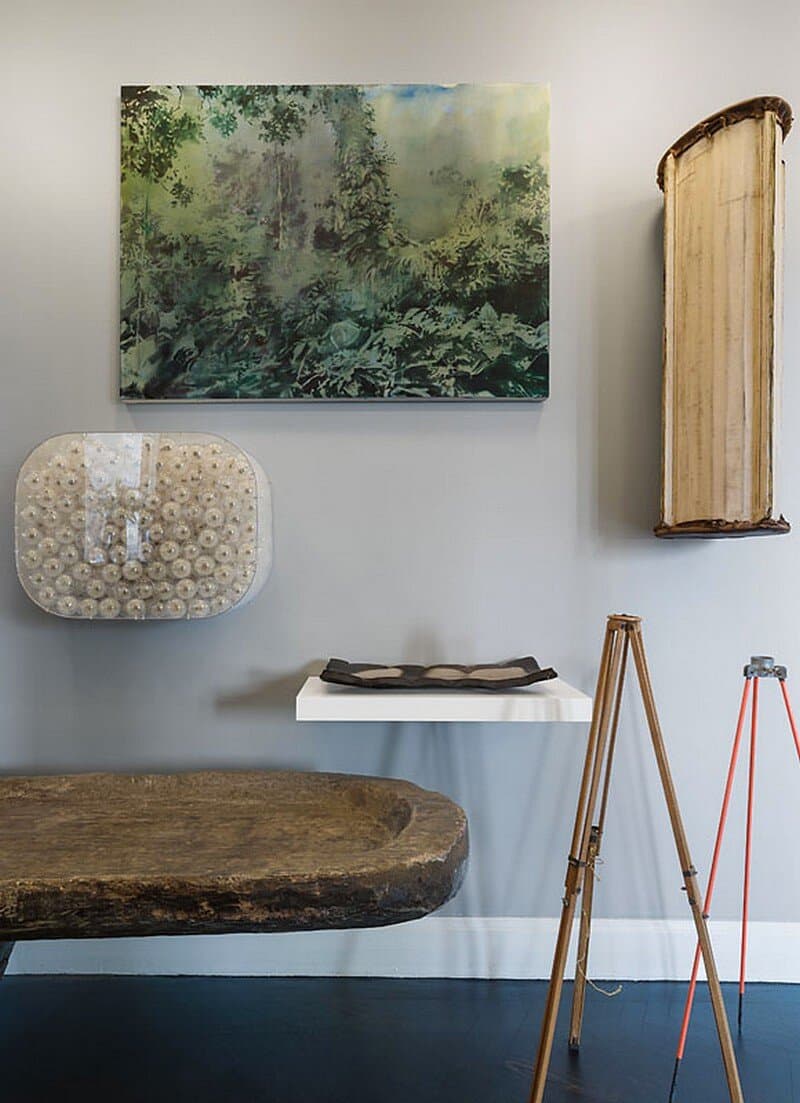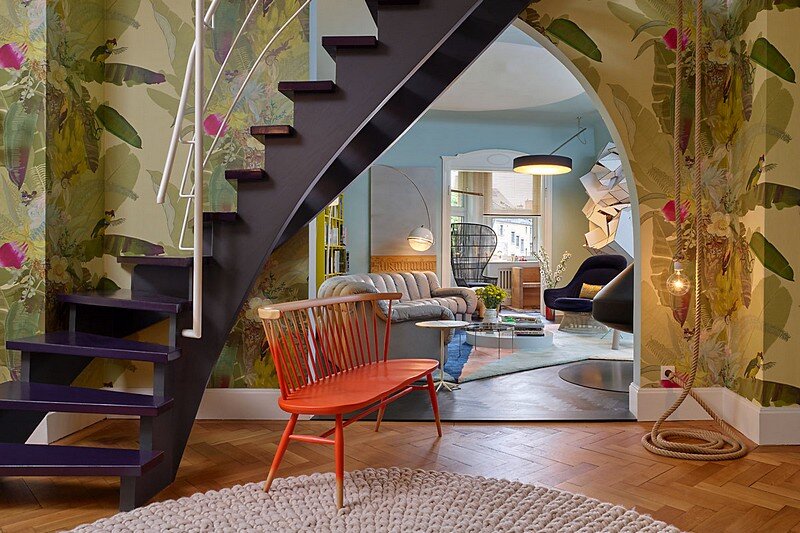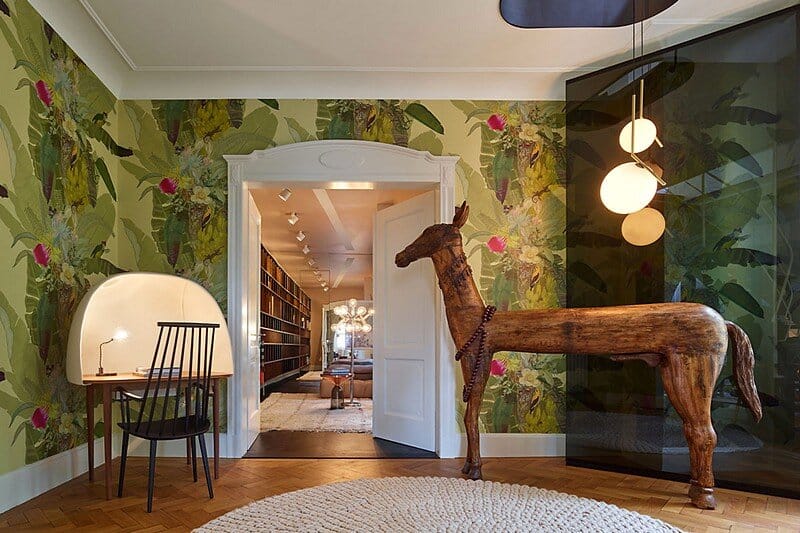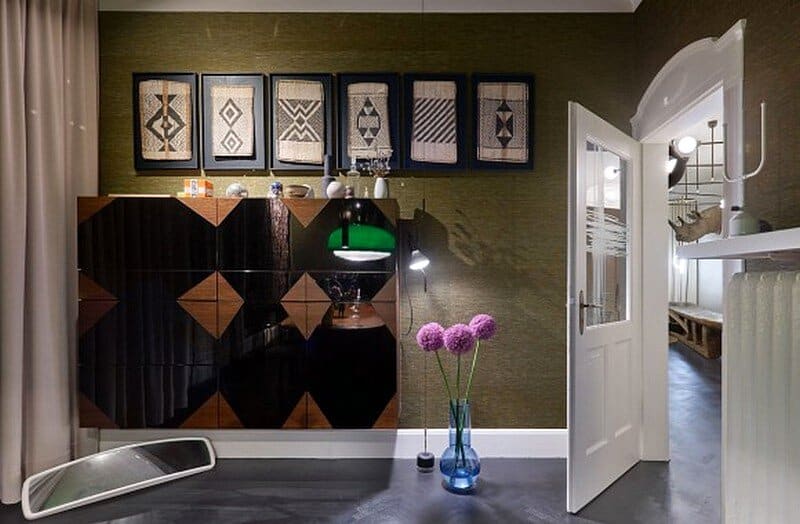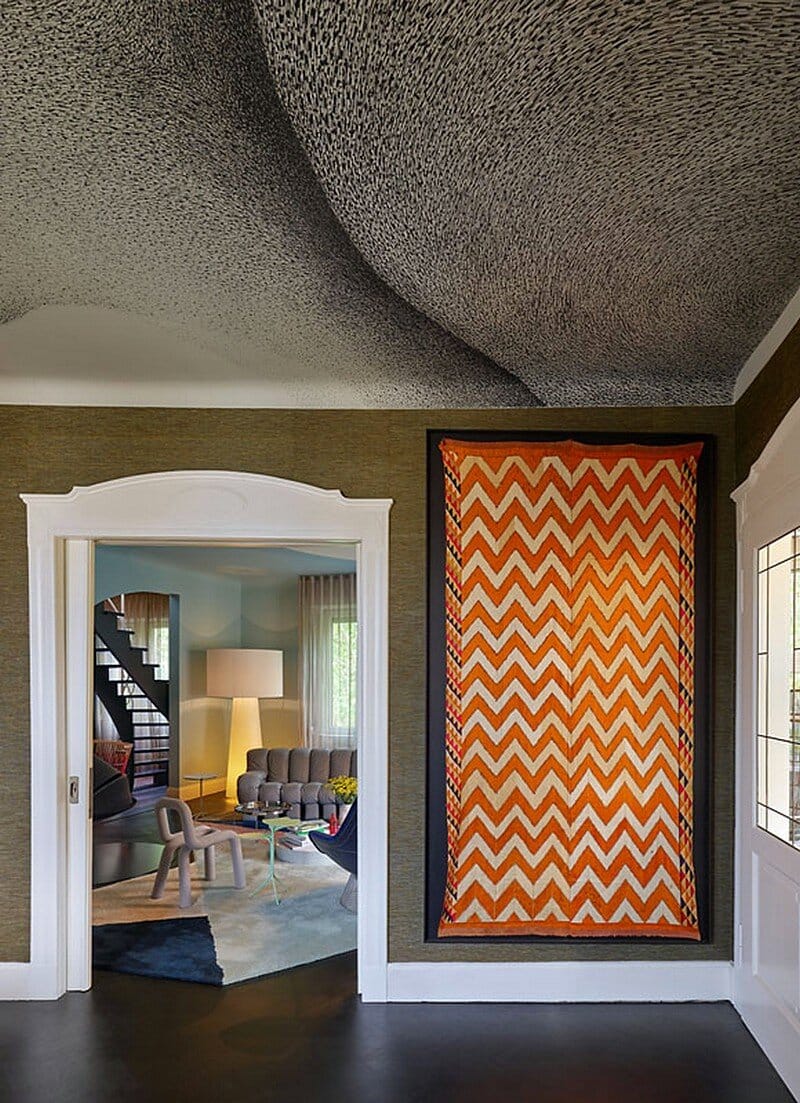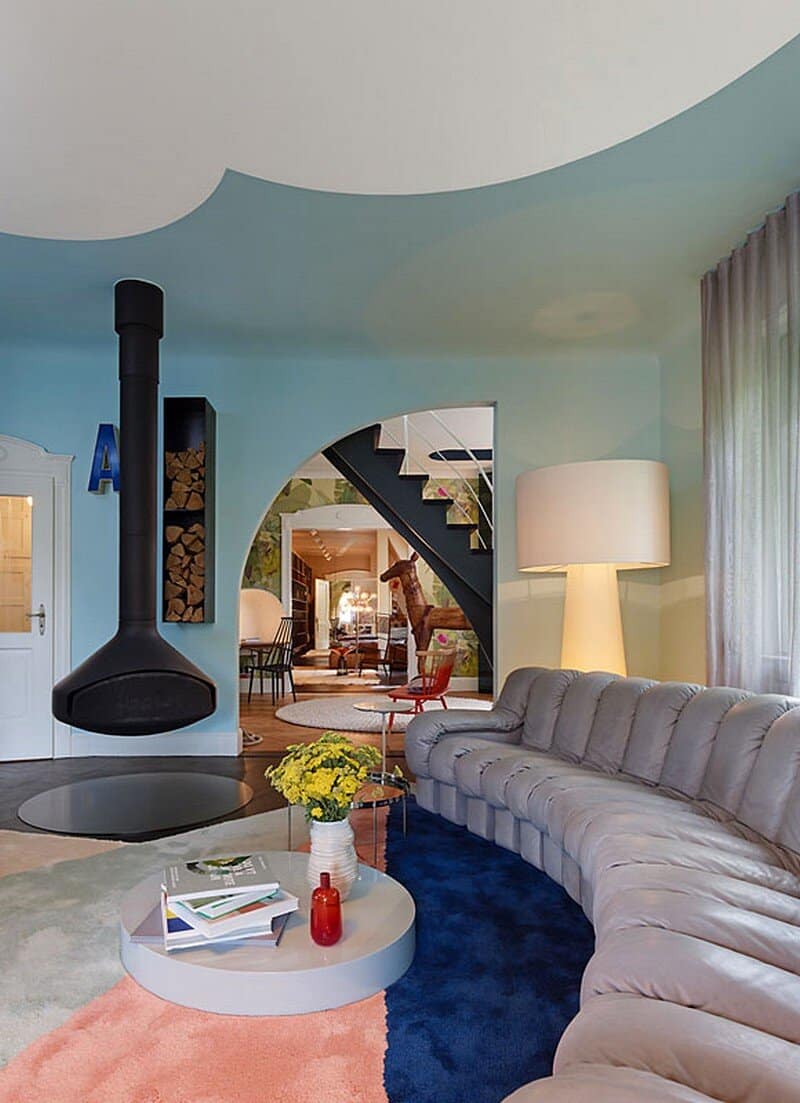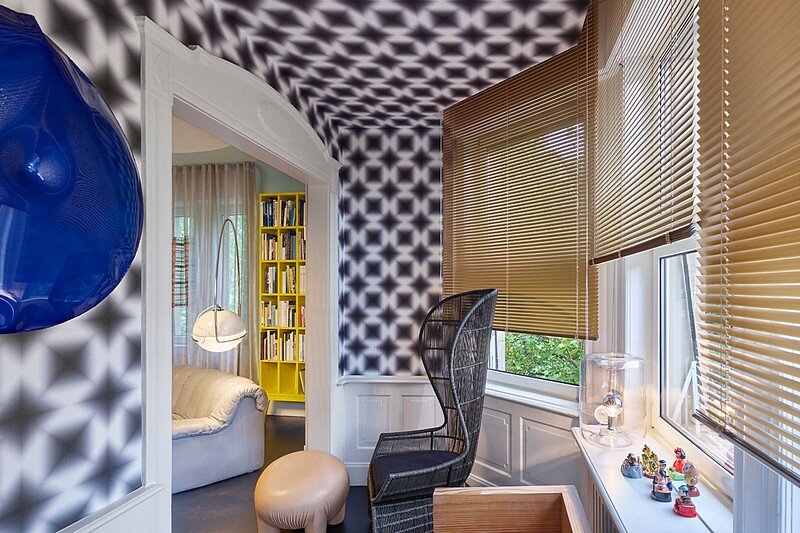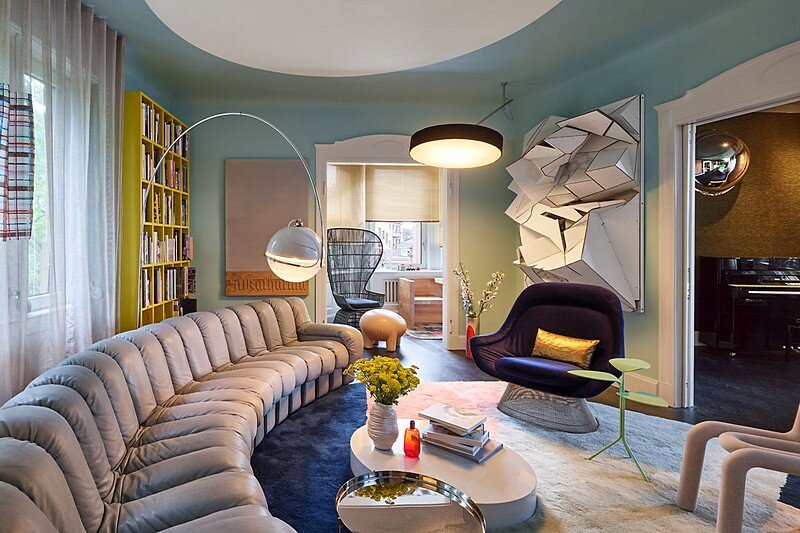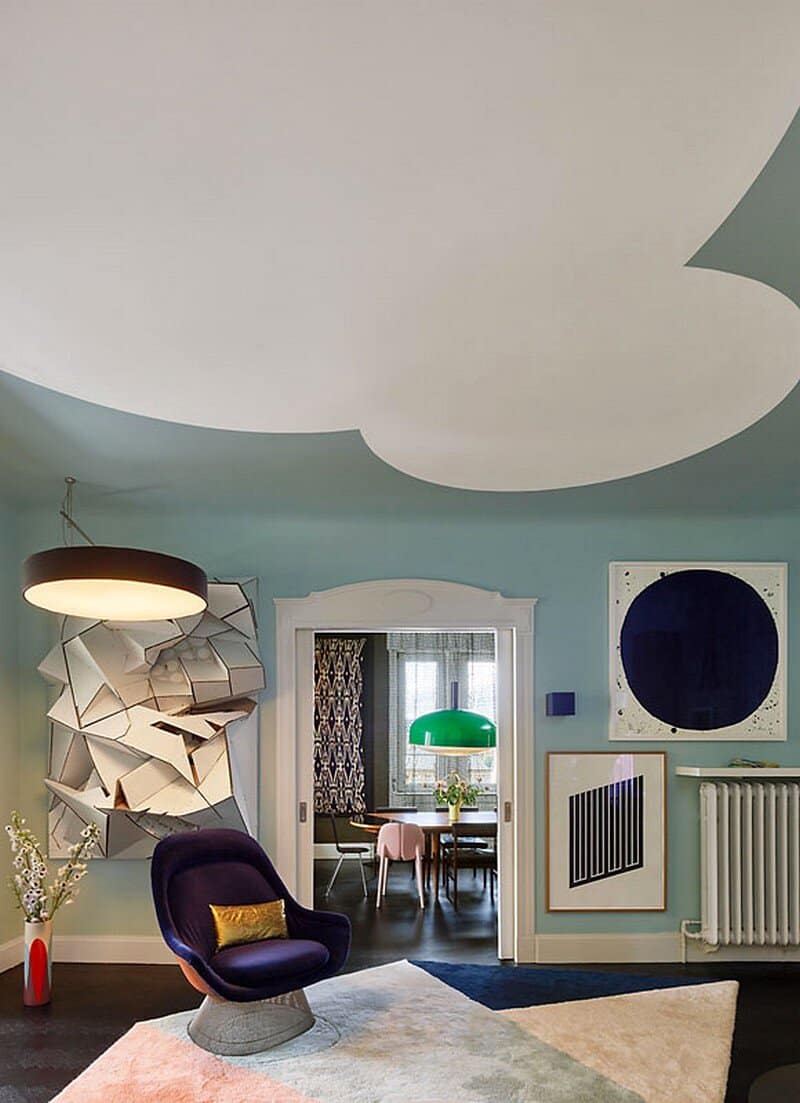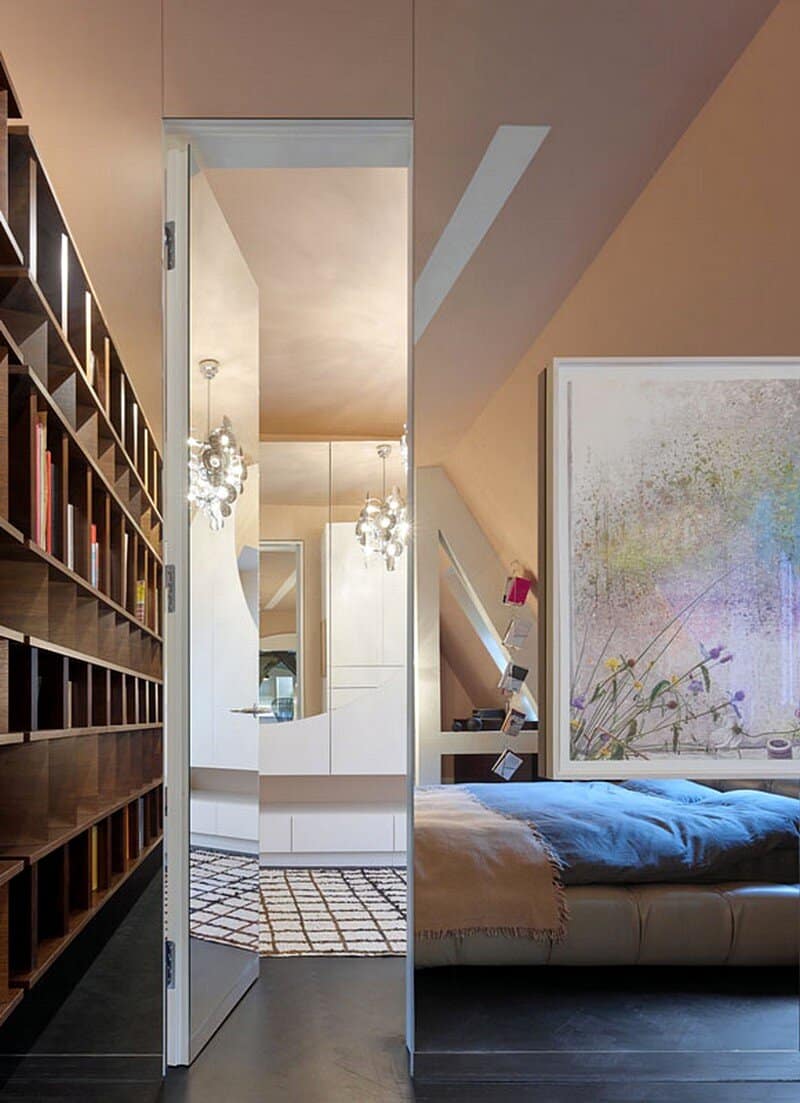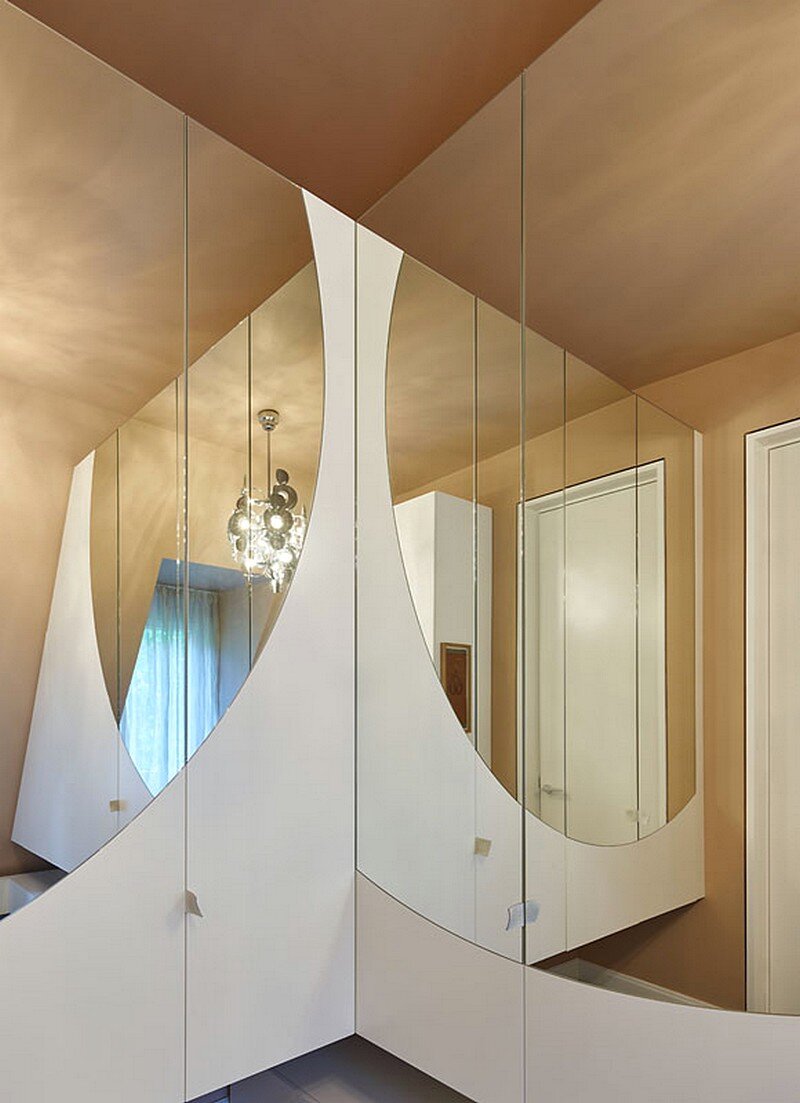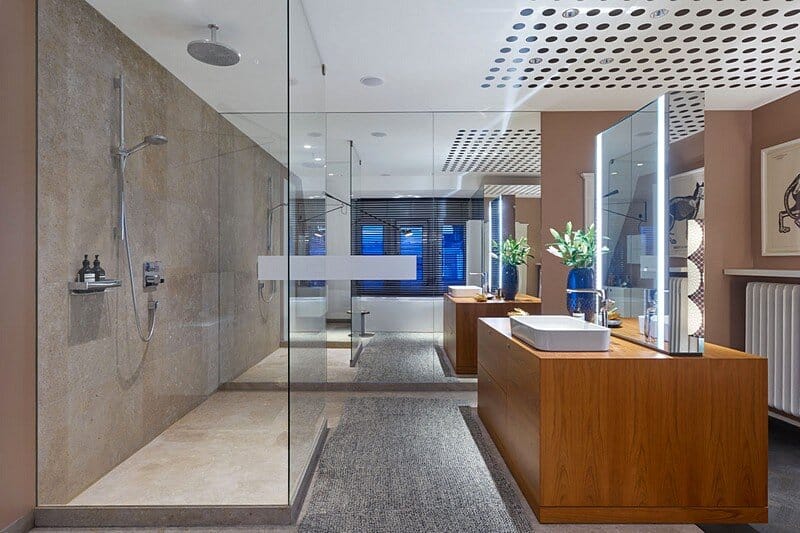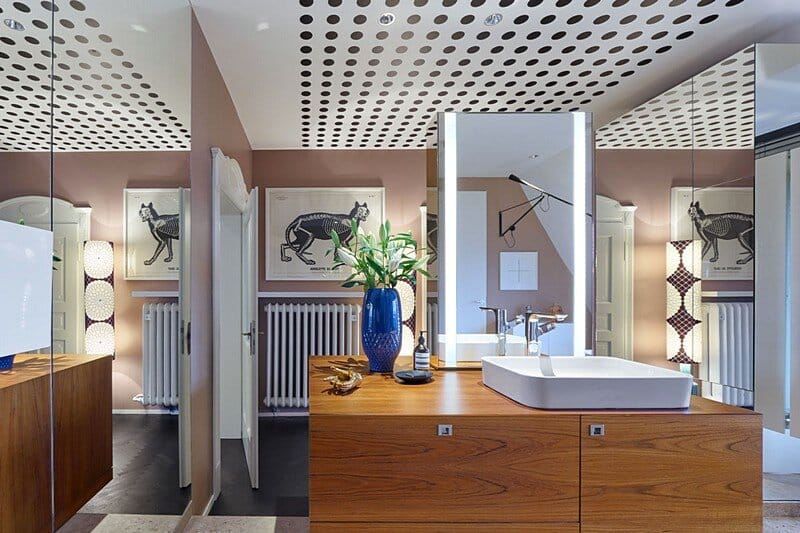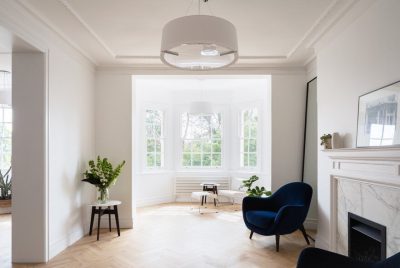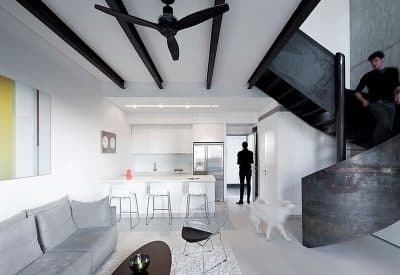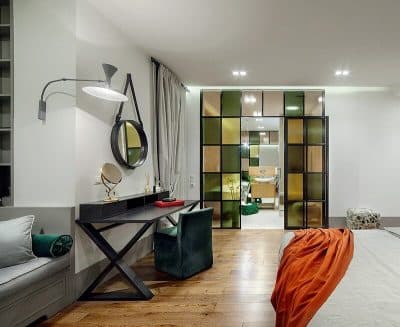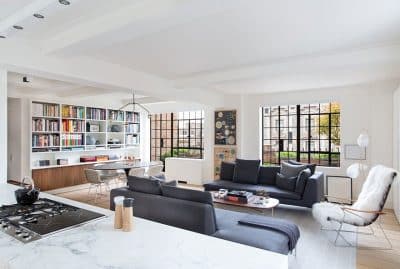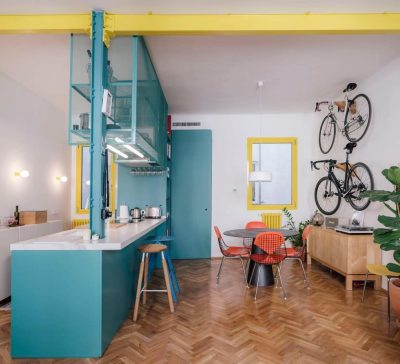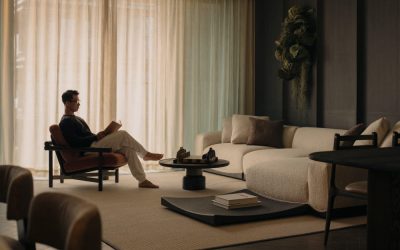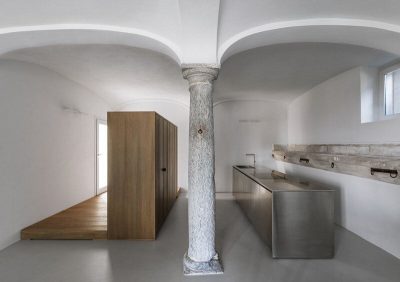This maisonette house belonging to two designers is a sensual collage of its owners’ thoughts and memories. The project was completed by Ippolito Fleitz Group a multidisciplinary, internationally operating design studio based in Stuttgart. In place of a closed, consistent aesthetic, the apartment functions as a collage of variegated moods. Yet in spite of their seeming disparity, a synthesis is achieved that perfectly reflects the personality of the owners in the individual rooms.
An architect and a textile designer have created a sanctuary in a listed Wilhelminian building in a sought-after location on the edge of Stuttgart’s city centre. Their new apartment stretches over two floors with an unusual tapering floor plan that resembles a slice of cake. The 290 m² have been transformed into a vibrant cabinet of curiosities, filled with mementos and inspirational pieces, which they have collected or sourced on their travels.
A characteristic period feature of the building is its layout of individual rooms grouped around a central hallway. This layout was carefully modified, respecting the building’s listed status, to create a spacious, open discourse with shifting vistas and overlapping perspectives.
A black, herringbone parquet floor runs from here throughout the apartment, giving the suite of rooms a flowing feel and creating a strong graphic counterpart to the typically bourgeois Wilhelminian architecture.
At the head of the hallway is the living room, a salon-like space with strong contrasting colours, intense graphic elements and large forms. A deep pile rug with a bold, geometric pattern in strong colours and a Moustache chair are more works of art than pieces of furniture, yet even these are outdone by the expressive pictures and objects on the walls.
The dining room is dominated by textile materials such as a dark green, silk wallpaper and finds from exotic travels, including Uzbek ikat cloth, Indian silk embroideries, Laotian textile applications and African Losa basketwork. In the centre of the room stands a large rosewood table, about which various chairs are gathered. One end of the table top is lacquered black. This shiny reflective surface creates a bridge to the piano as well as to a smoked oak sideboard hanging on one wall. Its partially black lacquered front resembles a fragmented mirror and dissolves the solidity of its form.
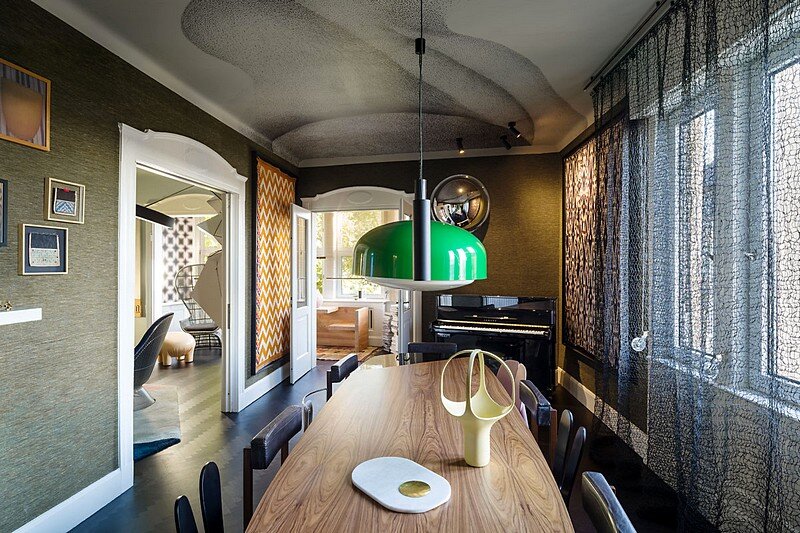
The dining room and salon are connected at their far ends by a small room with a bay window. Here the graphic character of one room and the textile materiality of the other merge in a specially commissioned psychedelic wallpaper, which challenges the eye and forms a provocative backdrop to several colourful artworks.
An asymmetric, curved wall opening in the opposite end of the salon leads into the staircase room, the only room in which the original oak parquet floor has been preserved. The upper storey is reached via a staircase with indigo treads and a dark green stringer.
From the staircase room, a second double-leaf door leads into the bedroom, which is also a library. The dark wood of the bookcase and sideboards coupled with the elegant colour of the walls give the room a delicate feel. A concealed door in the mirrored wall leads into a dressing room, which contains two large, white, hanging wardrobes.
To the right of the hallway lies a spacious bathroom. The salmon-coloured design is in harmonious dialogue with the limestone of the floor and several walls. Multiple mirrored surfaces expand the space and create optical bridges to the other rooms by means of reflections.The bathroom connects through to a gym, which doubles as a guest bedroom.
Cooking with friends is one of the owners’ passions. So the kitchen at the other end of the apartment has a stainless steel, industrial-style kitchen block at its centre. Original tiles on the floor and wall provide a scintillating contrast to the precise, sharply edged, solid surface, built-in cupboards. A freestanding marble-topped table offers space for more intimate gatherings.
The upper storey houses a spacious study and private TV lounge. The light-flooded top floor also has access to a generous terrace with a view of the treetops in the neighbouring avenue. A stunning view over Stuttgart is visible in the other direction.
The maisonette house is a museum of memories and a showroom for the creativity of its owners in one. In place of a closed, consistent aesthetic, the apartment functions as a collage of variegated moods. Yet in spite of their seeming disparity, a synthesis is achieved that perfectly reflects the personality of the owners in the individual rooms.
Interior design: Ippolito Fleitz Group
Project: Maisonette house
Project team: : Kim Angenendt, Hanna Drechsel, Gunter Fleitz, Lena Hainzinger, Peter Ippolito, Masafumi Oshiro, Verena Schiffl, Markus Schmidt
Location: Stuttgart, Germany
Photography: Zooey Braun
Thank you for reading this article!

